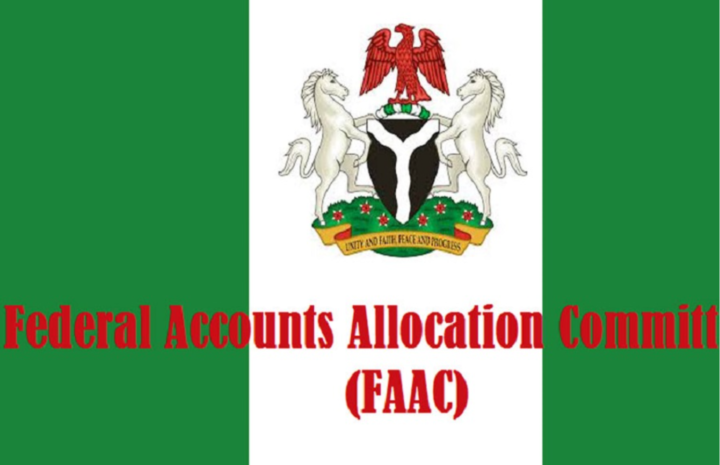The Federation Account Allocation Committee (FAAC) has disbursed a substantial sum of ₦1.818 trillion to the federal government, states, and local government councils across Nigeria, following a striking increase of ₦1.39 trillion in available revenue during the latest distribution cycle. This upward shift represents one of the largest revenue inflows recorded in recent times and reflects improved collections across multiple revenue streams.
Sources within FAAC confirm that the distribution reflects consolidated revenues from all federally collected sources, including the Federation Account, Value Added Tax (VAT), mining royalties, gas revenues, and exchange rate adjustments. The total is shared according to constitutionally mandated ratios: the federal government retains 52.68%, state governments 26.72%, local government councils 20.60%, the Federal Inland Revenue Service (FIRS) receives 0.50%, and the Nigerian National Petroleum Corporation (NNPC) is allocated 2%. The full amount is inclusive of remittances under the new ₦102.79 per litre payment per the Naira-for-Crude pipeline swap deal and proceeds from the Unified Payroll System and TSA clusters.

The record rise in revenue—an increase of ₦1.39 trillion compared to the previous month—is primarily attributed to rising non-oil receipts, including VAT collections that surged due to improved domestic economic activity. Enhanced performance in personal and corporate income taxes also played a key role, while crude oil sales experienced steady recovery in output, with surging global prices contributing to stronger statutory allocations.
Analysts and policymakers view this elevated FAAC distribution as a sign of growing fiscal resilience. It suggests Nigeria may be gradually reducing its reliance on oil revenues, which historically account for a major share of the federation account. Contributions from VAT, remittances, and excise duties are now helping to balance out fiscal exposure to oil market volatilities.
Federal government officials say the increased allocation will enable the implementation of priority budget lines across infrastructure, education, healthcare, security, agriculture, and social safety nets. While specifics remain under discussion, discussions at the Office of the Accountant General indicate that funds will be directed toward road rehabilitation, teacher training programmes, medical centre equipment upgrades, rural electricity projects, and expanding conditional cash transfer schemes.
State governors are expected to use their 26.72% share to support similar infrastructure and service upgrades within the states—from rural healthcare access to urban street lighting and agricultural extension services. Within local government councils, councils have underscored the need to use their 20.60% share toward improving basic amenities in rural communities, such as water supply, waste management, feeder road maintenance, and primary school renovations.
The surge in VAT revenue has drawn attention to the efficacy of localized economic reforms. Some state leaders credited recent efforts to widen VAT bases—particularly in trade, telecommunications, and construction sectors—as contributors to increased receipts. Economists are calling for sustained revenue reforms, including enhancing property tax administration and decentralizing tax remittances to enhance intergovernmental equity.
Security observers have also linked the improved federal budget to rising threats of unrest. They argue that increased funding may urgently support counter-insurgency operations in the North-East, fight against banditry in North-West agro-clusters, and efforts to counter piracy along the coast. Mid-level state police divisional officers may also be beneficiaries of increased budgets for collaborative crime-fighting efforts and archaeological theft prevention.
Despite optimism, fiscal experts caution against over-reliance on fluctuating revenue windfalls. They highlight the need for improved revenue forecasting to avoid the boom-bust cycles that often undermine budget credibility. Prudence in spending is essential; surplus funds should, they say, be used to cover recurrent costs and support multi-year capital projects rather than fund temporary interventions with no long-term value.
Civil society activists have urged the Code of Conduct Bureau and public finance oversight agencies to ensure budget transparency, especially while spending surges. They recommend that all tiers of government publish disaggregated quarterly FAAC receipts and spending utilization details in real time to reduce fiscal leakages and ensure accountability.
The National Assembly and Fiscal Responsibility Commission also plan to hold briefings with ministers, governors, and local government chairpersons to interrogate disbursement trends. Committee-led reviews of how the ₦1.818 trillion has been utilized and whether it aligns with fiscal discipline targets are expected in the coming weeks.
Meanwhile, the Accountant General is expected to verify performance to ensure states meet federal grant conditions before tapping into balance sheets. A letter from the Accountant General’s office to governors has emphasized that increased monthly revenue claims will be validated against statutory and project-based requirements.
The current FAAC release strengthens the purchasing power of sub-national governments, which could translate into long-overdue improvements in infrastructure and governance services. It also temporarily eases budget pressure on the federal treasury, allowing reallocation of external borrowing toward long-term capital development projects.
However, market analysts are pointing to the sustainability challenge: unless non-oil revenue streams continue to expand, FAAC troughs could return. The consensus calls for an improved revenue mobilisation framework—including trade reform, localized tax authority, and private sector collaboration—to firm up Nigeria’s fiscal outlook.
As the distribution cycle closes, attention turns to the implementation report that is expected by the end of Q3. If standardised monitoring and transparency mechanisms are deployed, and emergency supplementary budgets or allocations reflect priority areas, the ₦1.818 trillion distribution may mark a positive turning point in Nigeria’s fiscal management.
In the interim, FAAC’s latest disbursement delivers a meaningful infusion of resources into public finances—creating immediate spending space in national and sub-national budgets, easing critical service delivery gaps, and offering an opportunity to build policy momentum toward sustainable revenue-driven development.
Support InfoStride News' Credible Journalism: Only credible journalism can guarantee a fair, accountable and transparent society, including democracy and government. It involves a lot of efforts and money. We need your support. Click here to Donate
